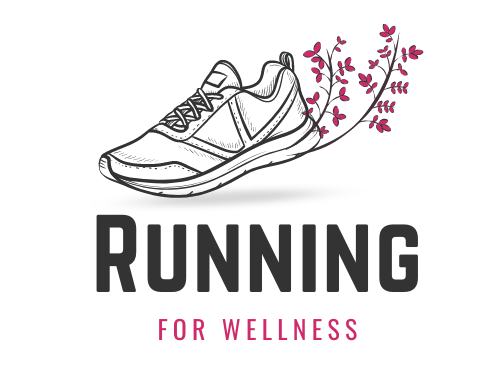Physical activity plays an essential role in mental well-being, with research highlighting its ability to reduce stress, improve mood, and enhance overall emotional health.
In recent years, shorter workouts have gained popularity, as busy schedules leave little room for long exercise sessions.
Many wonder if just 15 minutes of running can be enough to produce noticeable mental health benefits.
Table of Contents
ToggleHow Just 15 Minutes of Exercise Can Improve Mood
Research suggests that even short bursts of physical activity can create noticeable changes in mental well-being.
A study by Asics found that just 15 minutes of movement can lead to a measurable boost in mood, reducing stress while improving focus and energy levels.
Immediate Physiological Changes That Improve Mood
The effects of movement on the brain begin almost immediately, making even a brief run or workout session valuable. Within minutes of engaging in physical activity, several physiological responses contribute to an uplifted mood:
- Increased Blood Flow to the Brain: More oxygen and nutrients reach brain cells, enhancing cognitive function and mental alertness.
- Heart Rate Elevation: Improved circulation supports the release of endorphins, often referred to as “feel-good” hormones.
- Lower Cortisol Levels: Physical activity helps regulate the body’s response to stress by reducing cortisol, a hormone associated with anxiety and tension.
- Neurotransmitter Activation: Dopamine and serotonin levels rise, promoting feelings of relaxation and contentment.
A visit to a headache clinic may reveal that regular physical activity can also help reduce tension headaches, which are often linked to stress and anxiety. Even short runs or brisk walks contribute to this effect by relieving built-up tension in the body.
Types of Short-Duration Exercises That Boost Mood

Engaging in movement does not require an intense gym session. Several activities can provide the same mental benefits in a short amount of time:
- Running: A quick jog, even at a moderate pace, helps clear the mind and reduce mental fatigue.
- Brisk Walking: A 15-minute walk outdoors or on a treadmill increases oxygen intake while promoting relaxation.
- Dancing: Moving to music can elevate mood and serve as an enjoyable way to reduce stress.
- High-Intensity Interval Training (HIIT): Short, high-energy workouts release a surge of endorphins, improving emotional balance.
The Importance of Consistency
While a single session of movement can bring temporary relief, regular activity plays a key role in maintaining emotional well-being.
Small, consistent efforts throughout the week help build resilience against stress and mental exhaustion.
Those struggling with motivation may find it easier to commit to short, manageable sessions rather than long, structured workouts.
- Morning runs set a positive tone for the day, increasing energy and alertness.
- Midday walks offer a reset, breaking up long work hours and reducing mental fatigue.
- Evening exercise helps release built-up stress and encourages relaxation before bedtime.
The Science Behind Exercise and Mental Health

The connection between physical activity and mental health has been extensively researched, showing that exercise serves as a powerful tool for improving emotional well-being.
Engaging in movement triggers a series of biochemical processes that positively affect mood, stress levels, and overall cognitive function.
How Exercise Impacts Brain Chemistry
When a person engages in physical activity, the brain releases several neurotransmitters that directly influence emotions and mental clarity.
These chemical messengers help regulate mood, reduce anxiety, and enhance resilience to stress.
- Endorphins: Often referred to as the body’s natural painkillers, endorphins are responsible for the “runner’s high.” They interact with opioid receptors in the brain, reducing discomfort and generating feelings of euphoria.
- Serotonin: This neurotransmitter plays a crucial role in stabilizing mood, regulating emotions, and improving overall mental balance. Higher serotonin levels are linked to reduced symptoms of depression and anxiety.
- Dopamine: Known as the “reward chemical,” dopamine is associated with motivation, pleasure, and reinforcement of positive behaviors. Regular physical activity boosts dopamine levels, making it easier to maintain healthy habits.
Exercise and Neurogenesis
Beyond influencing brain chemistry, exercise contributes to structural changes in the brain. Research suggests that physical activity promotes neurogenesis, the formation of new brain cells.
The process is particularly significant in the hippocampus, a region responsible for memory, learning, and emotional regulation.
- Neurogenesis plays a role in preventing cognitive decline, making exercise a valuable tool for long-term mental health.
- Studies indicate that increased hippocampal volume is linked to lower rates of depression and anxiety.
- Regular movement may protect against neurodegenerative conditions, such as Alzheimer’s disease.
Exercise as an Alternative to Medication
For individuals struggling with mood disorders, physical activity may provide a non-pharmaceutical approach to symptom management.
Research has shown that moderate-intensity exercise can yield effects comparable to certain antidepressants, making it a promising option for those looking to improve mental health through lifestyle adjustments.
- A study conducted on patients with mild to moderate depression found that aerobic exercise significantly reduced symptoms, with effects lasting for weeks after the activity.
- Physical activity can serve as a preventative measure for those at risk of mental health disorders.
- Engaging in movement regularly may help reduce dependence on medication for some individuals, though professional medical guidance should always be sought.
Running vs. Meditation: Which is More Relaxing?

While meditation is widely recognized as a powerful tool for stress reduction, some individuals may find that movement-based practices like running provide a more effective way to relax.
Research published in Runner’s World suggests that aerobic exercise offers benefits similar to meditation in terms of reducing stress and promoting mental clarity.
Running encourages a rhythmic breathing pattern, which has a calming effect on the nervous system. The repetitive motion and steady pace create a form of moving meditation, allowing individuals to shift focus away from intrusive thoughts.
Unlike traditional seated meditation, which requires stillness, running provides an active form of stress relief that engages both the body and mind.
For some, sitting still during meditation can be challenging, making movement a more accessible alternative. Physical activity channels excess energy, reduces mental clutter, and enhances mood through biochemical processes.
While both methods offer value, the best approach depends on personal preference and individual needs. Those who enjoy dynamic movement may experience greater relaxation through running, while others may prefer the stillness of meditation.
The Bottom Line
Short bouts of exercise, including a 15-minute run, can significantly improve mood by stimulating the release of neurotransmitters that regulate emotions.
Physical activity offers an accessible and effective way to manage stress, enhance focus, and promote well-being.
Prioritizing movement, even in small increments, can create lasting benefits.
Related Posts:
- 43 Inspirational Quotes for Men's Personal Growth -…
- 25 Simple Running Motivation Tips To Get You Moving
- 10 Mental Health Reminders For When You’re…
- Running Coach Salary - How Much Do They Really Make?
- How Sleep Supports Better Mental and Physical Health
- Why Does My Side Hurt When I Sprint? Understand the…







